Trumpeter Swan
- February 27, 2024
- 0 comment
The Trumpeter Swan, an iconic symbol of grace and beauty in North America, is the largest native waterfowl species on the continent. Renowned for its majestic presence and melodious calls, this magnificent bird captivates the hearts of all who encounter it. With its striking white plumage, long neck, and distinctive trumpet-like calls, the Trumpeter Swan commands attention wherever it goes. These elegant creatures primarily inhabit freshwater lakes, ponds, rivers, and marshes across North America, where they form strong pair bonds and build large nests in shallow water.
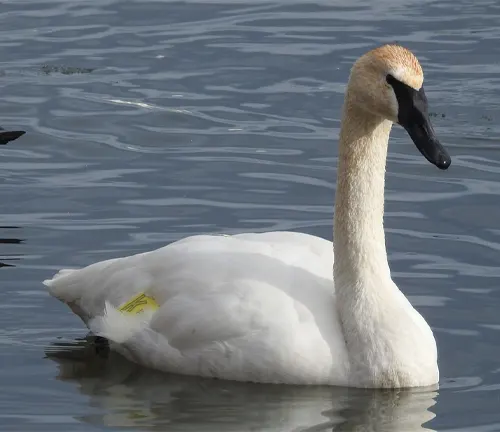
Despite facing threats such as habitat loss, pollution, and climate change, conservation efforts have helped stabilize their populations, earning them a classification of “Least Concern” on the IUCN Red List. As ambassadors for wetland conservation, Trumpeter Swans play a vital role in maintaining the health of their ecosystems, symbolizing resilience and beauty in the face of environmental challenges.
| Specifications | Details |
|---|---|
| Scientific Name | Cygnus buccinator |
| Common Name | Trumpeter Swan |
| Size | Wingspan up to 10 feet (3 meters) |
| Weight | 20 to 30 pounds (9 to 14 kilograms) |
| Plumage | All-white for adults; grey for juveniles |
| Habitat | Freshwater lakes, ponds, rivers, and marshes |
| Range | Historically Alaska to Great Lakes, now western US |
| Behavior | Form strong pair bonds; build large nests in water |
| Diet | Mainly aquatic plants, roots, tubers, and vegetation |
| Conservation Status | Least Concern on the IUCN Red List |
| Threats | Habitat loss, pollution, climate change |
| Lifespan | Up to 20 to 30 years in the wild |
| Significance | Ambassadors for wetland conservation |
| Symbolism | Grace, purity, and resilience |
Majestic Birds of North America

Trumpeter Swans, with their elegant stature and melodious calls, are some of the most majestic birds found in North America. Let’s delve into the fascinating world of these magnificent creatures.
The Trumpeter Swan (Cygnus buccinator) is the largest native waterfowl species in North America. These graceful birds are renowned for their impressive size, striking appearance, and distinctive trumpet-like calls, from which they derive their name.
Habitat and Distribution
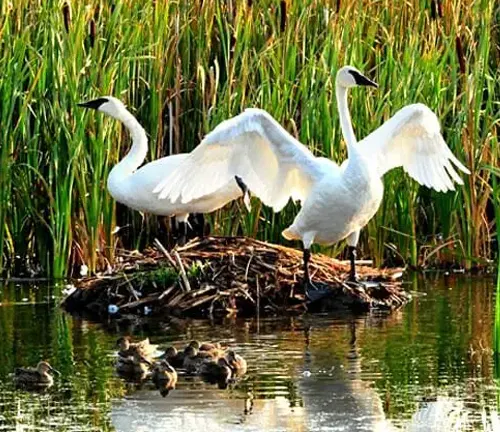
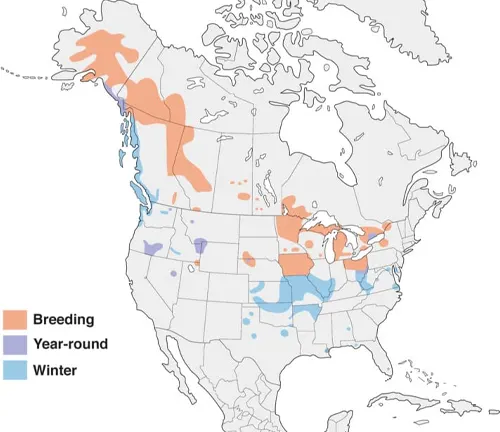
The habitat and distribution of the Trumpeter Swan encompass a range of freshwater environments across North America. Historically, these majestic birds inhabited regions from Alaska to the Great Lakes, encompassing a diverse array of habitats such as lakes, ponds, rivers, and marshes. However, due to factors like habitat loss and human encroachment, their distribution has become more restricted. Today, Trumpeter Swans are commonly found in the western United States and parts of Canada, where they seek out suitable nesting sites and feeding grounds amidst the tranquility of freshwater ecosystems. Their preference for shallow water bodies near lush vegetation ensures they have access to the resources necessary for their survival, making these habitats vital sanctuaries for these iconic birds. Despite facing challenges, conservation efforts strive to preserve and restore their habitats, ensuring that Trumpeter Swans continue to thrive in their natural environment.
Physical Characteristics
Size and Weight
Trumpeter Swans are renowned for their impressive size, making them one of the largest flying birds in the world. They boast a wingspan that can reach up to 10 feet (3 meters), showcasing their majestic presence in the skies. In terms of weight, adult Trumpeter Swans typically range from 20 to 30 pounds (9 to 14 kilograms), adding to their imposing stature. Their substantial size contributes to their ability to navigate and thrive in their aquatic habitats with ease.
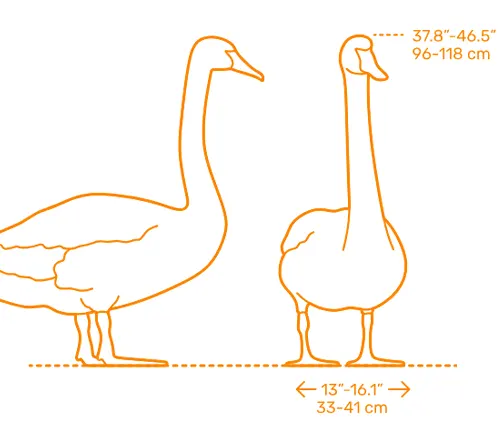

Plumage
The plumage of the Trumpeter Swan is striking and distinctive. Adult swans exhibit an elegant all-white plumage that gleams in the sunlight, giving them a regal appearance as they glide gracefully across the water. This pristine white coloring extends from their feathers to their long necks, accentuating their beauty and gracefulness. In contrast, juvenile Trumpeter Swans possess a grey plumage, gradually transitioning to the iconic white feathers as they mature. This transformation adds to the allure of these magnificent birds, symbolizing growth and maturity in their journey through life.
Behavior and Diet
Mating and Nesting
Trumpeter Swans are known for their strong pair bonds and lifelong partnerships. During the mating season, which typically occurs in the spring, pairs engage in elaborate courtship displays to strengthen their bond. These displays often involve synchronized swimming, head bobbing, and trumpeting calls, showcasing the commitment between mates. Once a pair has formed, they collaborate to build large nests made of plant materials in shallow water near the shore of lakes, ponds, or marshes. The female lays a clutch of eggs, usually between 3 to 8, and both parents take turns incubating them for around 32 to 37 days until they hatch. After hatching, the parents diligently care for their offspring, teaching them essential skills like foraging and swimming until they are ready to fledge.
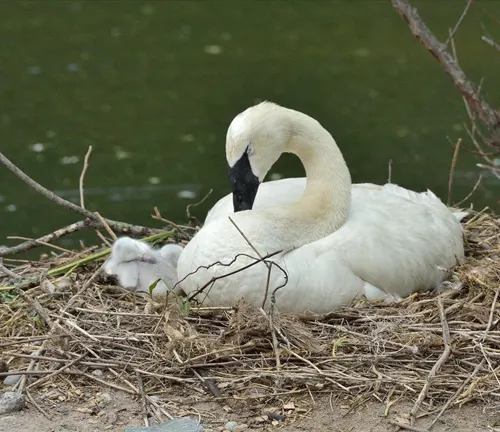
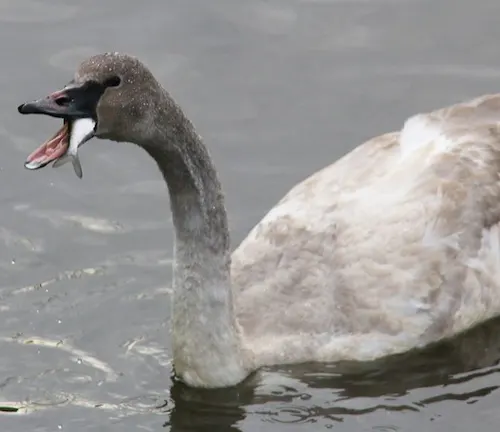
Feeding Habits
Trumpeter Swans are primarily herbivorous and feed on a diet consisting mainly of aquatic plants, roots, tubers, and submerged vegetation. They forage by either upending in shallow water to reach submerged vegetation or grazing on land near water bodies. Their long necks and specialized bills enable them to efficiently reach and consume their food. Trumpeter Swans are also known to feed on agricultural crops like grains and grasses, which can sometimes lead to conflicts with farmers. Despite this, their feeding habits play a crucial role in shaping and maintaining the health of wetland ecosystems, making them integral components of their natural habitats.
Conservation Status
The conservation status of Trumpeter Swans is of significant concern due to various threats they face in their natural habitats. Historically, Trumpeter Swans experienced a sharp decline in numbers due to overhunting for their feathers and meat, leading to population depletion across North America. However, concerted conservation efforts have been implemented to safeguard these majestic birds.
Currently, Trumpeter Swans are classified as a species of “Least Concern” on the International Union for Conservation of Nature (IUCN) Red List. This classification reflects the collective efforts to restore and protect their populations, which have shown signs of recovery in recent years.
Despite their improved status, Trumpeter Swans continue to face ongoing threats, including habitat loss, pollution, climate change, and human disturbance. These factors can impact their breeding success, migratory patterns, and overall population health.
Threats to Trumpeter Swans
Human Encroachment
Human encroachment poses a significant threat to Trumpeter Swans and their habitats. As human populations expand and develop, wetlands and natural water bodies where Trumpeter Swans reside are often drained, filled, or altered for agricultural, residential, or industrial purposes. This loss of habitat reduces the availability of suitable nesting sites, feeding grounds, and resting areas for the swans, forcing them into closer proximity to human activities. Encounters with humans can lead to disturbances, collisions with infrastructure such as power lines or buildings, and increased risk of predation. Additionally, human activities may introduce pollutants or disturb the natural balance of ecosystems, further impacting the health and viability of Trumpeter Swan populations.
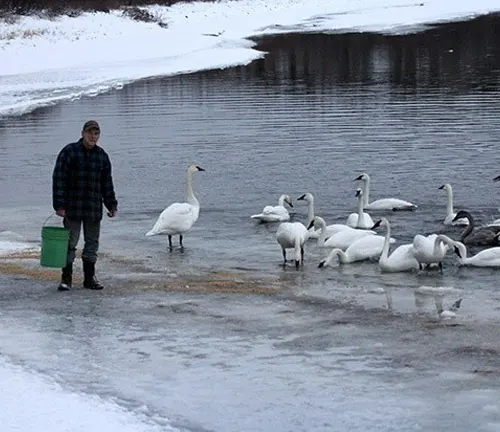
Pollution
Pollution, particularly water pollution, poses a significant threat to Trumpeter Swans and the ecosystems they inhabit. Runoff from agricultural areas, industrial sites, and urban areas can introduce pollutants such as pesticides, heavy metals, and chemicals into water bodies where Trumpeter Swans forage and reside. These pollutants can accumulate in their food sources, leading to toxicity and health problems for the swans. Additionally, pollution can degrade water quality, reduce the availability of suitable habitat, and disrupt the delicate balance of aquatic ecosystems, further jeopardizing the survival of Trumpeter Swans and other wildlife species.
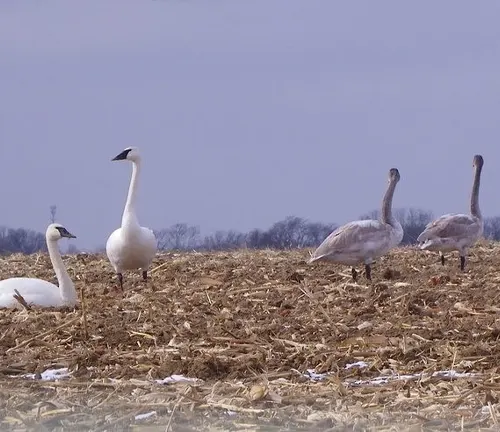
Climate Change
Climate change is a growing concern for Trumpeter Swans and their habitats. Rising temperatures, altered precipitation patterns, and changing weather conditions can impact the availability of suitable nesting sites, feeding grounds, and migratory routes for the swans. Shifts in habitat distribution and phenology may affect the timing of key life cycle events such as breeding, migration, and foraging, potentially disrupting the reproductive success and survival of Trumpeter Swan populations. Additionally, extreme weather events such as storms, droughts, and floods can lead to habitat loss, habitat degradation, and increased stress on swan populations. Addressing the challenges posed by climate change is essential for ensuring the long-term viability and resilience of Trumpeter Swans and their ecosystems.
Conservation Efforts
Numerous conservation organizations and government agencies are actively involved in protecting Trumpeter Swan populations. Efforts include habitat restoration, captive breeding programs, and public education initiatives to raise awareness about the importance of preserving these iconic birds.
- Habitat Restoration: Organizations and agencies work to restore and enhance wetland habitats that are essential for Trumpeter Swans. This includes preserving and restoring natural water bodies, managing vegetation, and creating suitable nesting sites.
- Captive Breeding Programs: Captive breeding programs are established to breed Trumpeter Swans in controlled environments, with the goal of bolstering wild populations, genetic diversity, and ensuring the survival of the species.
- Research and Monitoring: Scientists conduct research studies and monitoring programs to better understand the ecology, behavior, and population dynamics of Trumpeter Swans. This information helps guide conservation efforts and inform management strategies.
- Public Education and Outreach: Conservation organizations and agencies engage in public education and outreach efforts to raise awareness about the importance of conserving Trumpeter Swans and their habitats. Educational programs, workshops, and interpretive materials help foster appreciation and stewardship for these birds.
- Legislative Protections: Legal protections are put in place to safeguard Trumpeter Swans from harm and disturbance. This includes regulations on hunting, habitat destruction, and disturbance during nesting and migration periods.
- Collaborative Partnerships: Collaboration among government agencies, conservation organizations, researchers, landowners, and local communities is essential for implementing effective conservation strategies. Partnerships facilitate coordinated efforts, resource sharing, and collective action for the benefit of Trumpeter Swans.
- Community Engagement: Involving local communities in conservation efforts is crucial for achieving long-term success. Community-based conservation initiatives empower individuals and communities to take ownership of conservation actions, promote sustainable practices, and support habitat protection efforts.
Different Species
Eastern Trumpeter Swan
(Cygnus buccinator bewickii)
This subspecies is found in the eastern part of North America, particularly in the Great Lakes region and parts of eastern Canada. Eastern Trumpeter Swans are slightly smaller in size compared to their western counterparts and have subtle differences in plumage coloration.
Interior Trumpeter Swan
(Cygnus buccinator interior)
The Interior Trumpeter Swan inhabits the interior regions of North America, including the Great Plains and central Canada. This subspecies is characterized by its robust build and slightly larger size compared to other subspecies.


Pacific Trumpeter Swan
(Cygnus buccinator columbianus)
The Pacific Trumpeter Swan is found along the Pacific coast of North America, from Alaska down to the western United States. This subspecies tends to have a darker plumage compared to other subspecies and is known for its distinctive vocalizations.
Frequently Asked Questions (FAQs)
- Are Trumpeter Swans aggressive?
While Trumpeter Swans are generally peaceful, they can become aggressive, especially during the breeding season when defending their nests and territories. - How long do Trumpeter Swans live?
On average, Trumpeter Swans can live for up to 20 to 30 years in the wild, with some individuals living even longer in captivity. - Do Trumpeter Swans migrate?
Yes, Trumpeter Swans undertake seasonal migrations, with northern populations migrating southward in the winter to find open water and suitable feeding grounds. - Can Trumpeter Swans fly?
Despite their large size, Trumpeter Swans are powerful fliers and can travel long distances during migration. - Are Trumpeter Swans endangered?
While they faced significant declines in the past, Trumpeter Swans have rebounded thanks to conservation efforts and are currently classified as a species of “Least Concern” on the IUCN Red List. - What do Trumpeter Swans eat?
Trumpeter Swans primarily feed on aquatic plants, roots, tubers, and submerged vegetation, supplemented by grains and grasses when available. - How do Trumpeter Swans communicate?
Trumpeter Swans communicate through a variety of vocalizations, including trumpet-like calls, honks, and hisses, as well as body language such as head bobbing and wing flapping. - How do Trumpeter Swans protect their nests?
Trumpeter Swans protect their nests by building them in shallow water near the shore of lakes or marshes, where they are less accessible to predators. They also aggressively defend their nests and territories from potential threats. - Do Trumpeter Swans mate for life?
Yes, Trumpeter Swans typically form strong pair bonds and mate for life, although they may find new mates if their partner dies. - How do Trumpeter Swans adapt to winter conditions?
Trumpeter Swans adapt to winter conditions by migrating to areas with open water and suitable feeding grounds, where they can find refuge from frozen habitats. - What are the main threats to Trumpeter Swans?
The main threats to Trumpeter Swans include habitat loss, pollution, illegal hunting, collisions with power lines, and lead poisoning from ingesting lead shot. - What conservation efforts are in place to protect Trumpeter Swans?
Conservation efforts for Trumpeter Swans include habitat restoration, captive breeding programs, public education, and legislative protections to mitigate threats and ensure their long-term survival. - Can Trumpeter Swans be kept as pets?
Trumpeter Swans are wild birds and are not suitable to be kept as pets. Additionally, it is illegal to possess or disturb them without proper permits due to their protected status. - How do Trumpeter Swans contribute to ecosystem health?
Trumpeter Swans play a vital role in maintaining the health of wetland ecosystems by controlling aquatic vegetation, stirring up sediments, and providing food for other wildlife through their feeding habits. - What is the significance of Trumpeter Swans in indigenous cultures?
In indigenous cultures, Trumpeter Swans hold cultural significance as symbols of grace, purity, and spiritual connection to the natural world. They feature prominently in folklore, art, and traditional ceremonies, representing harmony and balance within ecosystems.


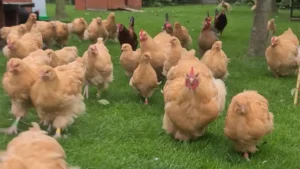
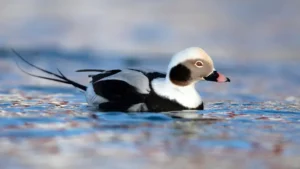
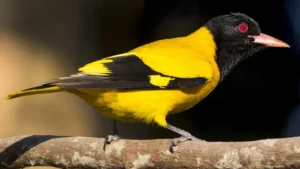
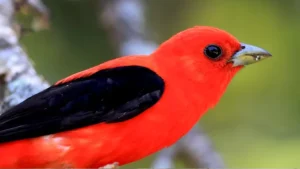


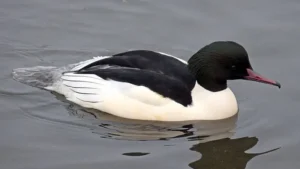
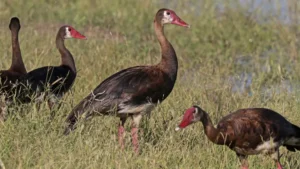

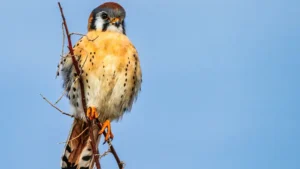
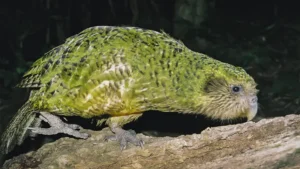
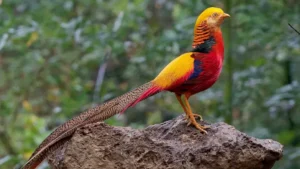
Leave your comment